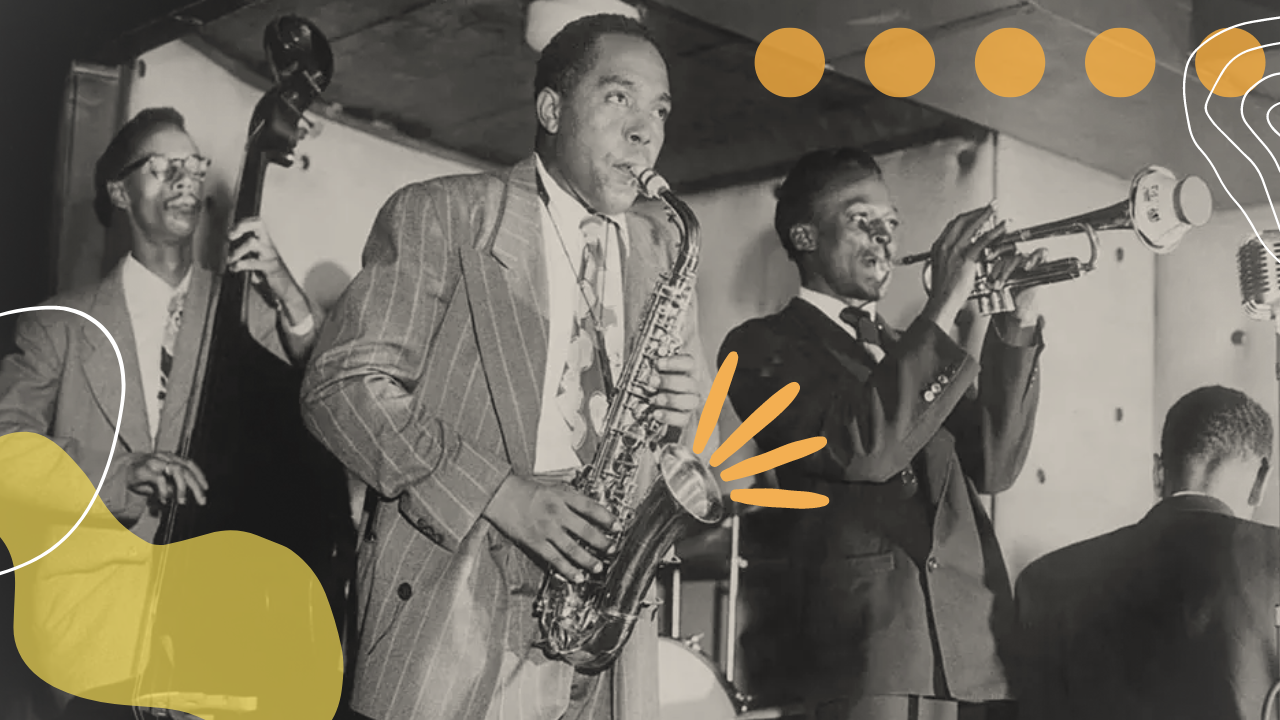The saxophone stands out as a special representative of the woodwind family. Most people mentioning this instrument immediately draw a parallel with jazz, with which it became synonyms. Indeed, you can hear saxophone solos in many jazz compositions. However, it was not always so. Let’s explore the evolution of the saxophone in jazz in more detail.
How Old Is The Sax? Why Is It Called That?
The instrument was invented in the early 1840s by the Belgian instrument maker Adolphe Sax. The fact that we know its definitive inventor also contributes to the uniqueness of this instrument. It’s also obvious that the instrument is named after its inventor.
After Adolphe finished studying at the Royal Conservatory of Brussels and moved to Paris, he started working on his own new instruments. The idea of a saxophone was brought to reality during his experiments with the bass clarinet and his attempts to create the instrument, which would combine a flute and clarinet ability to play fast passages, while keeping horn-like projection of the brass instruments.

Adolphe Sax designed 14 members of the saxophone family. The key system of the saxophone, developed by him, made it possible for musicians to have a smooth transition between notes. The complex arrangement of pads, levers, and keys allowed the system to provide better control over pitch and tonality. Although many improvements took place during the following years, the system still follows principles established by its inventor.
Originally, Adolphe Sax planned to make the saxophone a part of the orchestra. During the late 19th and 20th centuries, composers had written many works featuring the saxophone as both a solo instrument and a part of professional ensembles. Despite its important place in classical music, the saxophone quickly gained its popularity among military bands due to its ability to produce very loud sounds.
The saxophone is known for its conical bore, its tube narrows toward one end, allowing it to produce a voice-like sound. Thanks to this feature, saxophonists are able to express a wide range of emotions through their solos. The voice-like effect affected both classical and jazz music.
What Is The Role of The Saxophone in Jazz?
The saxophone is a real synonym with the jazz genre, as they are closely connected. However, it was not the dominant instrument in this genre until the 20th century. Although jazz was born in New Orleans in the 1910s, saxophones didn’t have a big role back then. In the early days of jazz, musicians preferred instruments like the trumpet, trombone, and clarinet. The exceptions included Frankie Trumbauer and Sidney Bechet.
The rise of the saxophone’s popularity happened in the 1920s-1930s and it coincided with the popularity of big bands and the swing era. Jazz bands of that time selected the saxophone due to its wide range, expressiveness and the ability to blend well with brass and woodwind sections. The soprano saxophonist Sidney Bechet, one of the first soloist, and tenor saxophonist Coleman Hawkins helped establish its place in jazz.

During the big band era of the 1930s-1940s the instrument took a central place in big bands, where it was used for melodic and harmonic passages, enriching them with a full sound that was significant to the swing style.
With the bebop movements in the 1940s, the saxophone's role significantly expanded. Famous musician Charlie Parker had brought his innovative approach to playing the alto saxophone and set new standards for jazz improvisation. He laid a strong foundation for the saxophone’s prominence in modern jazz. Other styles, like hard bop, cool jazz, modal jazz, and free jazz, continued to feature the saxophone and push the boundaries. Musicians John Coltrane, Sonny Rollins, and Ornette Coleman played a great role in stretching the limits of what the saxophone was able to bring in music.
Why Is A Saxophone Popular in Jazz?
The rapid popularity and evolution of the saxophone in jazz is explained by a few factors:
- It contributes to melody and Improvisations. The saxophone serves as a key instrument for improvisation. Performing on this instrument, musicians demonstrate their technical skill and fill compositions with versatile emotions.
- It contributes to rhythm. Within ensemble settings, saxophonists lay down the harmonic and rhythmic foundation, making the overall sound more impressive and fuller.
- It enriches music with colors. The saxophone brings a wide range of textures and colors to jazz compositions, which range from smooth to aggressive.
Key saxophonists, who played a great role in popularizing the saxophone, are:
- An alto saxophonist, Charlie Parker, who was one of the founders of the bebop style.
- John Coltrane, who is known for his experiments in modal, avant-garde and free jazz.
- Sonny Rollins, who was one of the most influential saxophonists, playing in hard bop style.
- Stan Getz, who was the best-known saxophonist of jazz's cool school.
- Ornette Coleman, who was a pioneer of free jazz in the late 1950s.

Conclusion
From its invention, the saxophone gained its rapid popularity due to its flexibility and expressive power. It’s considered as a cornerstone of jazz music, as it contributed to what we know as a jazz genre today.
You can learn additional information about this instrument from our article 10 incredible facts about the saxophone.
If you’re a saxophonist or search for a gift idea for your friend musician, check out our accessories for saxophones and our collection of customized saxophones.




 https://kgumusic.com/pages/about-us
https://kgumusic.com/pages/about-us